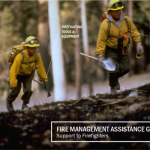AUSTIN, Texas – To meet the needs of Texans affected by the severe storms, tornadoes and flooding from May 4 to June 22, a State/FEMA Disaster Recovery Center in Harris County will transition to a U.S. Small Business Administration (SBA) Disaster Loan Outreach Center on Friday, Aug. 28.
Thursday, Aug. 27, is the final day for survivors to register for FEMA recovery assistance or to apply for a loan from SBA.
The Disaster Recovery Center at Bayland Community Center, 6400 Bissonnet St., Houston, TX 77074, will close on Aug. 27, at 6 p.m. On Friday, Aug. 28, an SBA center will open at that location at 9 a.m. Hours of operation will be Monday through Friday 9 a.m. to 6 p.m. until further notice.
Representatives from the SBA will be available at the center to meet individually with residents and business owners to answer their questions, explain SBA’s disaster loan program, help them complete their applications and close their approved disaster loans.
SBA low-interest disaster assistance loans of up to $200,000 are available to homeowners to repair or replace damaged or destroyed real estate. Homeowners and renters are eligible for up to $40,000 from SBA to repair or replace damaged or destroyed personal property.
Businesses of all sizes and private nonprofit organizations may borrow up to $2 million to repair or replace damaged or destroyed real estate, machinery and equipment, inventory, and other business assets.
SBA can also lend additional funds to businesses and homeowners to help with the cost of making improvements that protect, prevent or minimize the same type of disaster damage from occurring in the future.
Applying for an SBA low-interest disaster loan is part of federal disaster assistance. Many people who apply to FEMA are automatically referred for a low-interest disaster assistance loan. Survivors should complete SBA loan applications so they can be considered for all available disaster assistance.
SBA is the federal government’s primary source of money to fund long-term rebuilding of disaster-damaged private property. SBA helps businesses of all sizes, private nonprofit organizations, homeowners, and renters fund repairs or rebuilding efforts, and cover the cost of replacing lost or disaster-damaged personal property. These disaster loans cover uninsured and uncompensated losses and do not duplicate benefits of other agencies or organizations.
Survivors with questions regarding their FEMA applications or the appeals process after the DRC transitions to a Disaster Loan Outreach Center have several ways to obtain information:
-
Go online at www.DisasterAssistance.gov.
- Call 800-621-3362 or (TTY) 800-462-7585. People who use 711-Relay or Video Relay Services (VRS) can call 800-621-3362. Multilingual operators are available.
- Visit the Texas Disaster Recovery website fema.gov/disaster/4223.
- Contact U.S. Small Business Administration’s Disaster Assistance Customer Service Center at 800-659-2955, email disastercustomerservice@sba.gov, or visit SBA’s website at sba.gov/disaster. Deaf and hard-of-hearing individuals may call 800-877-8339.
For more information on Texas recovery, go to Twitter at www.twitter.com/femaregion6 and the Texas Division of Emergency Management website, www.txdps.state.tx.us/dem/.
###
All FEMA disaster assistance will be provided without discrimination on the grounds of race, color, sex (including sexual harassment), religion, national origin, age, disability, limited English proficiency, economic status, or retaliation. If you believe your civil rights are being violated, call 800-621-3362 or 800-462-7585(TTY/TDD).
FEMA’s mission is to support our citizens and first responders to ensure that as a nation we work together to build, sustain, and improve our capability to prepare for, protect against, respond to, recover from, and mitigate all hazards.
The SBA is the federal government’s primary source of money for the long-term rebuilding of disaster-damaged private property. SBA helps businesses of all sizes, private non-profit organizations, homeowners and renters fund repairs or rebuilding efforts and cover the cost of replacing lost or disaster-damaged personal property. These disaster loans cover losses not fully compensated by insurance or other recoveries and do not duplicate benefits of other agencies or organizations. For more information, applicants may contact SBA’s Disaster Assistance Customer Service Center by calling 800-659-2955, emailing disastercustomerservice@sba.gov, or visiting SBA’s website at www.sba.gov/disaster. Deaf and hard-of-hearing individuals may call 800-877-8339.
FEMA’s temporary housing assistance and grants for childcare, medical, dental expenses and/or funeral expenses do not require individuals to apply for an SBA loan. However, those who receive SBA loan applications must submit them to SBA to be eligible for assistance that covers personal property, transportation, vehicle repair or replacement, and moving and storage expenses.
Visit Texas Disaster Mitigation | FEMA.gov for publications and reference material on rebuilding and repairing safer and stronger.
View post:






